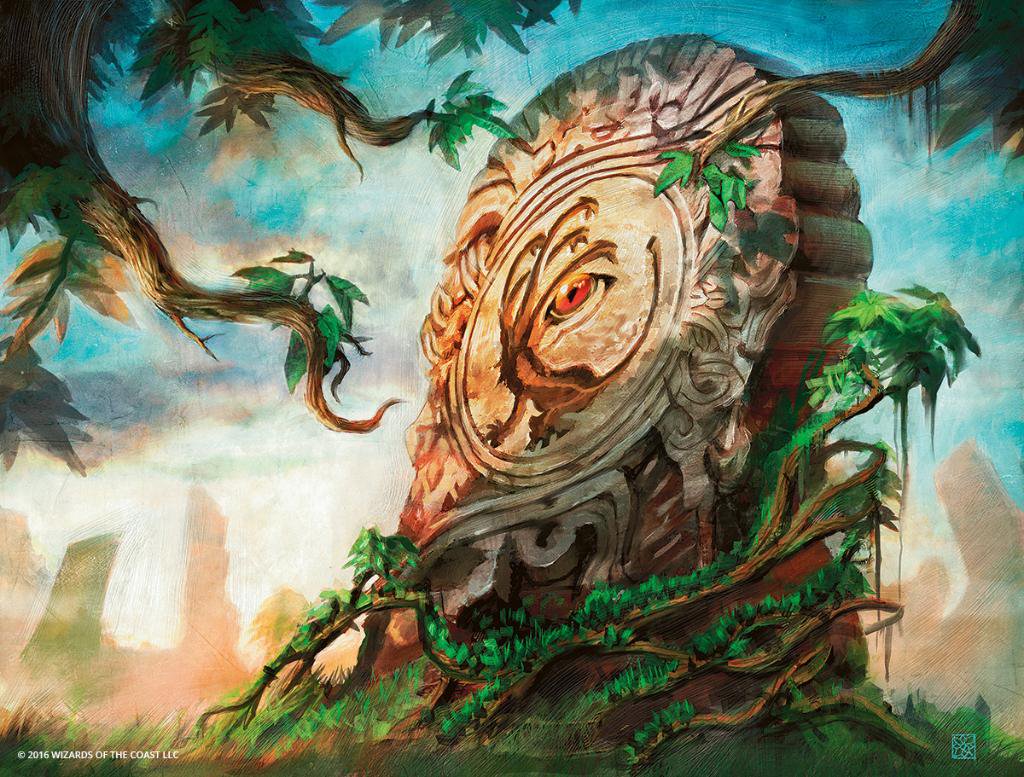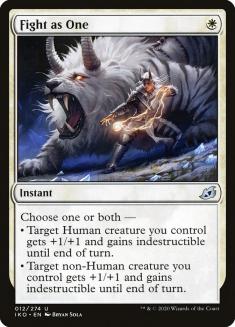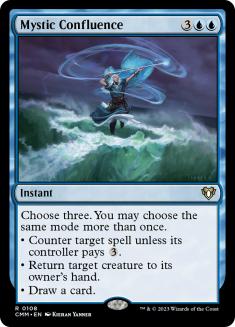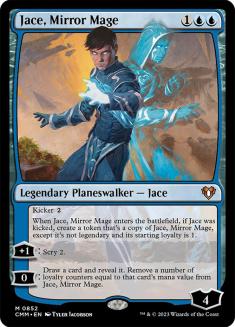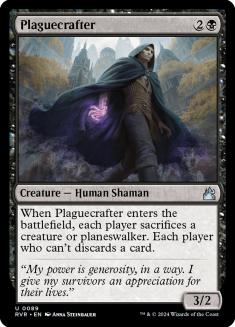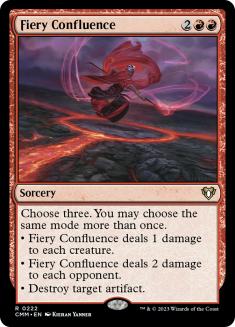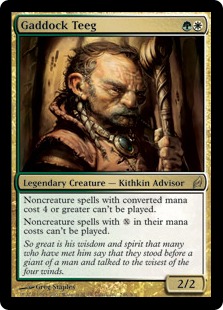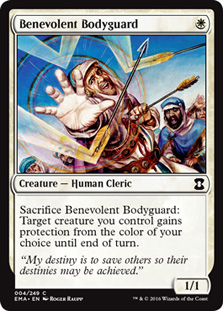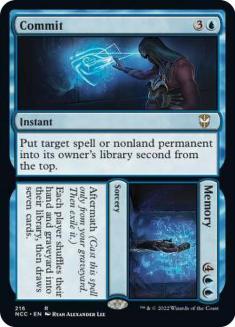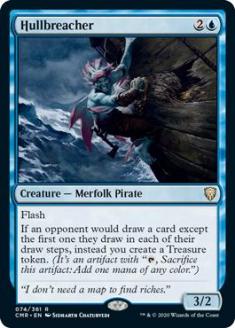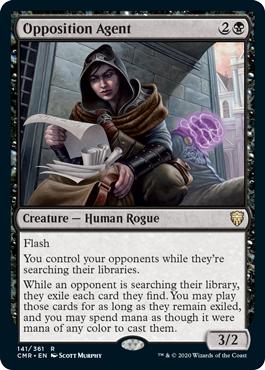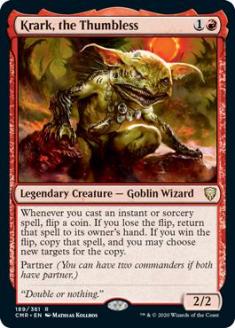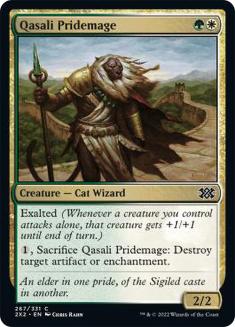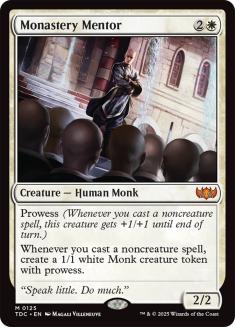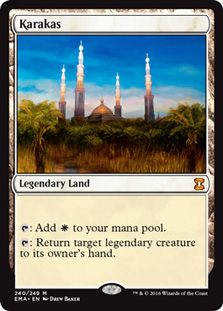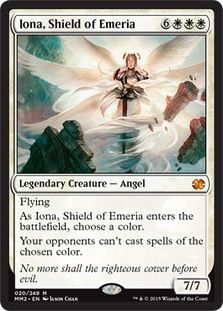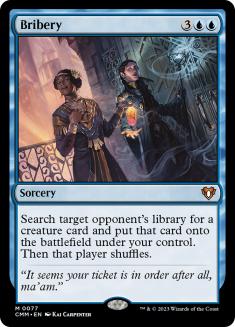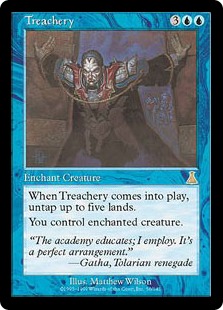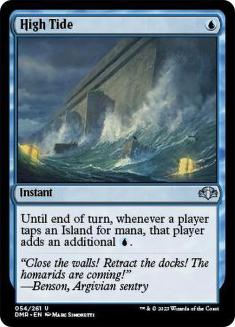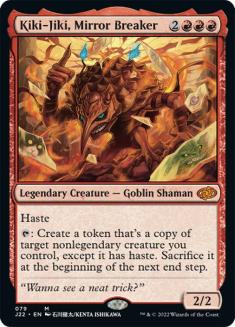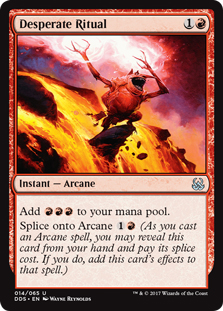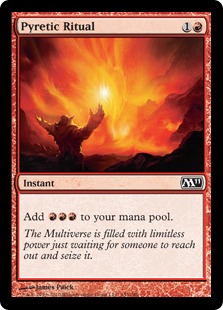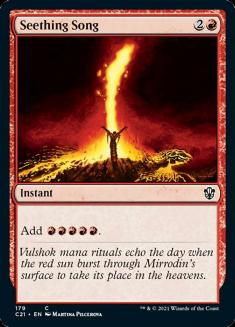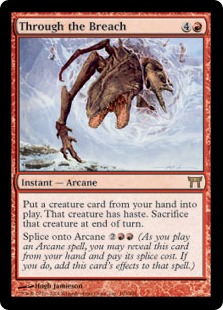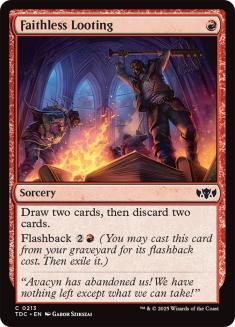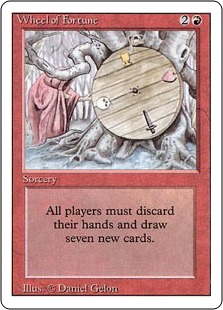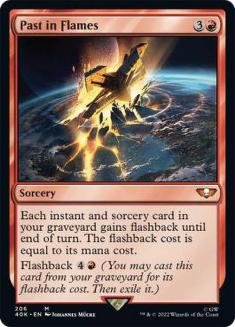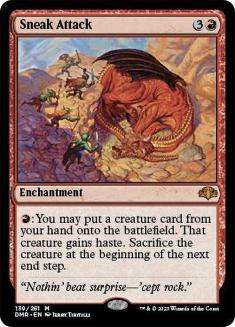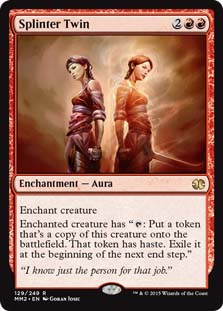We’re one week out from the return of eight-person Vintage Cube drafts on Magic Online (MTGO), as is December tradition. This week we get a whole new toy to play with in Vintage Cube Supreme Draft and things are gonna get weird. My crash course in drafting the MTGO Vintage Cube is a good starting point for approaching this novel format, and today I’m going to offer some insights on the sorts of cards that gain or lose value in Supreme Draft as opposed to a more traditional Cube Draft.
Before we get into that, let’s go over the updates to the Cube that are in place starting this week. Only six cards have changed, though a couple of them are pretty substantial.
Out:
In:
Both Confluences were very high picks in the Cube, so it’s rather strange to see them go. Presumably these cuts have something to do with the cards not currently displaying the chosen modes to both players on MTGO. Qasali Pridemage and Benevolent Bodyguard are plainly better than Gaddock Teeg and Fight as One, though none of these are especially exciting. I’m glad to see Krark, the Thumbless getting a shot and I hope that it’s good, though when it comes to Commit, Hullbreacher, and Opposition Agent we know that we’re dealing with high-impact cards for a degenerate format, and Vintage Cube Supreme Draft promises to be just that.
Building decks with two first picks from eighteen packs means that you’re going to see a lot more power in Supreme Draft as compared to merely drafting three packs. You’ll end up with more Moxen and similarly broken cards on average as well as having a much higher theoretical ceiling for these sorts of effects. My understanding is that each pack is generated independently as well, which means you could see decks with multiple copies of Black Lotus. Games are going to feel much closer to Vintage Constructed and it’ll be important to draft with that fact in mind.
My hypothesis is that counterspells and fast combo benefit tremendously from this structure and essentially everything else suffers. With this framework in mind, here’s how I would modify my approach to drafting each color.
White
I often talk about how Mono-White Aggro overperforms in Vintage Cube, but Supreme Draft actually takes away the color’s major strength. Mono-White Aggro decks tend to be the most coherent decks at the table, and are drafted because you can always wheel some white creature with power and toughness. This type of card gets much weaker when you’re looking at so many first picks, as Thalia, Guardian of Thraben’s ceiling is nowhere close to that of cards like Ponder. Even if Spirit of the Labyrinth can lock up an opponent’s hand sometimes, there are lots of different ways that your opponents will be trying to win in the course of one to two turns, and having both the right hatebear and the ability to cast it are not guarantees.
Armageddon gets much worse in this environment given that artifact mana will be more plentiful and the creatures that you want for your Armageddon decks are otherwise worse as well. Oblivion Ring is usually fine to have around, but is too reactive and slow for my liking when the field gets more combo-centric.
The list of white cards that I’m excited about is actually pretty short:
Monastery Mentor is restricted in Vintage and I expect it gets a lot better when you’re so much more likely to be able to assemble a deck that’s nothing but busted spells. I wouldn’t be embarrassed to play a couple of cheap threats or cards like Swords to Plowshares and Mana Tithe, but the fact that the other cards I’m mentioning here are just tools for and against Reanimator decks should strongly signal how I feel about white in this format.
Blue
Blue will remain the best color in the Cube, probably no matter how you draft it, but a big change that comes with Supreme Draft is that you won’t have to fight other players to draft it. If there’s an Ancestral Recall in any of those eighteen packs, it’s yours! I can believe that some broken nonblue decks will show up this week, but I’ll personally be going out of my way to be blue myself.
Stack-based interaction, in particular free counterspells like Force of Will and Force of Negation, will be even better than usual with decks like Reanimator being pretty easy to assemble. The best possible decks are very likely some form of combo with some Forces of their own, either to protect that combo or disrupt the opponent’s.
Deceiver Exarch and other Twin combo pieces benefit quite a bit from this environment as well, given that you don’t have to fight anybody else for pieces and how effective flash threats that disrupt your opponent’s mana can be in combo mirrors. Newcomers Commit and Opposition Agent fit this bill, with both being some combination of disruption and combo piece that can be cast at instant-speed as well.
There are very few blue cards that actually get worse in Supreme Draft, but there are a few.
The long and short of it is that I’m much less interested in playing any card that really cares about what my opponent is up to. Bribery will miss more often and Treachery will be weaker than just trying to do something that always ends the game. High Tide suffers in this environment in much the same way that it does in Legacy, with the other combo decks just not needing to make as many land drops to be effective. To that end, I suppose Time Spiral actually loses quite a bit of stock relative to Timetwister, which you’ll probably see cast on Turn 1 or 2 significantly more than you’re used to.
To that end, I would generally err on the side of casting your mana rocks as soon as possible, even if you have nothing to do with the mana. This is some ancient Vintage wisdom from Timetwister and Wheel of Fortune mirrors, where it’s just so much better to have already cast your Moxen when your opponent casts a draw-seven effect.
Black
Black is a really interesting color in Vintage Cube, because it offers some of the very best and some of the very worst cards. The disparity in quality between Demonic Tutor and Phyrexian Rager is more on display than normal in Supreme Draft, but you’re much more likely to be able to play with the former and much less likely to have to play with the latter.
I’m expecting to draft a lot of Entombs, Dark Rituals, and Vampiric Tutors this week, and I’m generally not trying to go anywhere near a Dismember. If Treachery has lost some of its luster, then there’s not much reason to give Fatal Push a second look.
I’m not sure if Storm gets enough better to consistently compete with Reanimator in this environment, but if you’re like me, then Bolas’s Citadel is already pretty high on your pick order and should be even higher in Supreme Draft as a Tinker target that can win immediately.
Thoughtseize and Collective Brutality are two more cards on my list of things that I always take highly and will be paying even more mind to than usual. The Cliffs Notes for drafting black are that you want combo pieces and targeted discard, and that Reanimator is probably just better than Storm despite not being remotely as cool.
Red
Much like white, red gets dramatically worse. It’s really hard to hack it with Lightning Bolts against Griselbrands. Shout-out to everyone who tries to make it work with Eidolon of the Great Revel this week — you have my respect, but you do not have my blessing.
The list of red cards that I endorse in Vintage Cube Supreme Draft is quite short.
I might even be generous putting the two-mana Rituals here, but they’re good to have around if you’re trying to do Thousand-Year Storm things. I imagine that’s going to be much worse on average than builds of Storm that don’t require a setup turn, but I’ve seen stranger things.
Green
It’s possible that green actually gets hit the hardest. When the Moxen are plentiful, nobody has need for Birds of Paradise. And while I’m often happy enough playing with Gaea’s Cradle, it has a pretty similar problem to High Tide in this environment.
Generally, I just really don’t want to try to play very many expensive cards at all considering that there’s plenty of cheap stuff that just ends the game. I might try to go off with Natural Order and Craterhoof Behemoth a time or two, but that’s just another deck that gets completely demolished by Reanimator. That won’t be the whole field, but I’m expecting a lot of it.
I’m even somewhat skeptical of Channel given that the eight- or more-mana colorless cards just don’t fit great with a lot of the other broken stuff. Perhaps a deck that has Channel and Sneak Attack with Emrakul, the Aeons Torn could work, or maybe a deck that either goes for Channel or Shallow Grave, but I’m not feeling mono-green small creatures and Channel much at all.
The green card that I expect to perform much better than usual is Fastbond. Fastbond is oftentimes embarrassing given that it doesn’t do a lot if you’re not drawing extra cards, but when you don’t have to fight other players for dual lands and draw-sevens you are much more likely to have turns where Fastbond generates tons of mana and allows you to win the game before your opponent gets started.
Gold Cards and Dual Lands
In a roundabout way, dual lands go up significantly in stock in Supreme Draft. If a pack doesn’t offer something in the way of fast mana, a broken effect, or cheap card selection, I will generally be looking for a dual land (preferably a blue one). Previously I would take these opportunities to potentially get scrappy with a beatdown deck, but I’m just not optimistic about that being particularly effective. Every pick that doesn’t directly contribute to some kind of broken opening should be used to hedge on something that might contribute to whatever cards that do contribute to broken opening show up later.
There aren’t many gold cards that I’m particularly interested in, with Oko, Thief of Crowns and Dack Fayden unsurprisingly being the top of the list, but I do want lands that can cast either Ancestral Recall or Demonic Tutor. I also value Leovold, Emissary of Trest considerably higher in this environment as it’ll be generally easier to find ways to reliably cast it and you’ll be more likely to pull off a draw-seven combo with it.
Artifacts
Moxen and Signets will still be the name of the game, with slower effects like Winter Orb and Equipment losing a lot of stock. As a rule, I like artifacts more than Naya cards, though those familiar with Vintage Cube will already know which ones we’re looking for.
Relic of Progenitus is the most-improved artifact in the Cube given that it’s a cheap option to disrupt any combo that relies on the graveyard, and I expect to consistently start one. I’m hoping to draft a lot of Tinker decks this week and Relic being a low-opportunity-cost, graveyard-hating piece of Tinker fodder strikes me as being incredibly powerful.
I’ll be spending a lot of time in the queues this week trying to do the most broken things possible. Hopefully this overview helps you to achieve the same. Dream big and go off.

